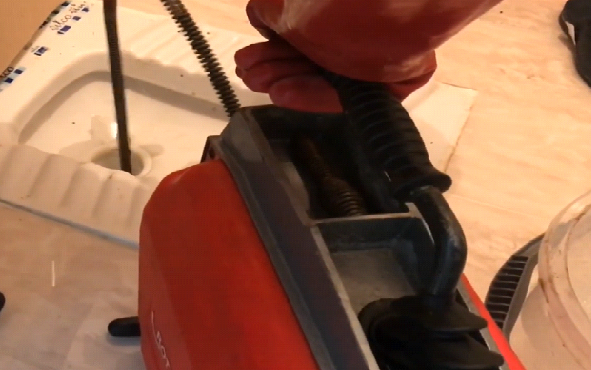Orthopedic medicine has revolutionized the way we treat bone, joint, and muscular disorders. From fracture management and spinal alignment to knee replacement and rehabilitation, orthopedics depends heavily on precision, safety, and innovation. But what truly empowers orthopedic professionals to perform their best is access to reliable, world-class equipment — and this is made possible by orthopedic medical equipment suppliers.
These suppliers form a critical link between technology and healthcare. They ensure that hospitals, clinics, and orthopedic specialists receive the best-quality implants, surgical instruments, and rehabilitation devices that meet the highest international standards. In today’s fast-evolving medical world, their role goes far beyond distribution — they are partners in progress, innovation, and patient recovery.
What Is Orthopedic Medical Equipment?
Orthopedic medical equipment refers to the specialized tools, devices, and implants used in diagnosing, treating, and rehabilitating disorders of the musculoskeletal system — which includes bones, joints, muscles, tendons, and ligaments.
These devices are essential in every stage of orthopedic care — from diagnosis to post-surgery recovery.
Common Categories of Orthopedic Equipment
Orthopedic Implants: Bone plates, screws, rods, and prosthetic joints used to replace or stabilize damaged bones and joints.
Surgical Instruments: Drills, retractors, bone saws, forceps, and orthopedic toolkits that enable precise surgeries.
Rehabilitation Equipment: Braces, supports, traction systems, and mobility aids that help patients recover mobility.
Diagnostic Devices: Imaging systems such as X-ray units, bone densitometers, and orthopedic analyzers.
Orthotics and Prosthetics: Custom-made external devices that support weakened joints or replace missing limbs.
Each of these devices plays a crucial role in ensuring that orthopedic treatments are effective, comfortable, and long-lasting.
The Essential Role of Orthopedic Equipment Suppliers
Orthopedic equipment suppliers are much more than intermediaries between manufacturers and hospitals. They are responsible for maintaining the lifeline of orthopedic infrastructure. Their efficiency directly impacts surgical success, patient recovery, and healthcare productivity.
Key Responsibilities of Orthopedic Suppliers
Procurement and Distribution: Delivering orthopedic products and instruments to hospitals, clinics, and rehabilitation centers.
Quality Assurance: Ensuring that every device complies with international safety and performance standards like ISO 13485, CE, or FDA.
Technical Assistance and Training: Offering demonstrations and guidance on the correct use of advanced orthopedic devices.
After-Sales Support: Providing installation, calibration, maintenance, and repair services.
Customized Solutions: Delivering patient-specific orthopedic implants or devices using modern technologies like 3D printing.
A reliable orthopedic equipment supplier doesn’t just deliver tools — they deliver trust, reliability, and precision to medical professionals.
Qualities of a Trusted Orthopedic Medical Equipment Supplier
Choosing the right supplier is vital for ensuring smooth operations, reduced downtime, and better clinical outcomes. The best suppliers combine technology, ethics, and service excellence.
1. Certified and Compliant Products
A dependable supplier only deals with certified products that meet the regulatory standards of healthcare authorities worldwide. This ensures patient safety and consistent device performance.
2. Comprehensive Product Portfolio
Hospitals prefer suppliers that provide a complete range — from orthopedic implants to physiotherapy and rehabilitation equipment — under one roof.
3. Industry Experience and Reputation
Suppliers with years of experience and strong client relationships bring unmatched reliability and understanding of healthcare needs.
4. Technical Expertise
A knowledgeable supplier helps hospitals choose the right tools for specific procedures, improving surgical accuracy and patient outcomes.
5. After-Sales Service
Continuous technical support, product maintenance, and replacement services are signs of a professional supplier who values long-term relationships.
6. Fair Pricing and Transparent Dealings
Ethical pricing, clear communication, and on-time deliveries make a supplier a preferred healthcare partner.
Technological Innovation in Orthopedic Equipment
The orthopedic industry has entered a new era driven by innovation and precision. Modern orthopedic suppliers are bringing groundbreaking technologies to healthcare institutions, transforming how surgeries and recoveries are managed.
3D Printing for Personalized Implants
3D printing allows for the creation of custom orthopedic implants that match a patient’s unique anatomy. This results in faster healing and greater comfort.
Robotic-Assisted Surgery
Robotic systems are revolutionizing orthopedic surgery, offering unmatched precision during procedures like knee or spine replacements and minimizing human error.
Smart Implants and Sensor Technology
Smart orthopedic implants equipped with sensors can monitor healing progress and transmit real-time data to healthcare providers.
Artificial Intelligence (AI) Integration
AI is being used to assist in surgical planning, diagnostic imaging, and rehabilitation, enabling doctors to make data-driven decisions.
Biocompatible and Lightweight Materials
Innovations in material science have led to implants that are stronger, lighter, and more compatible with the human body, reducing the risk of rejection.
Suppliers who stay ahead of these technological trends help healthcare providers deliver better outcomes, faster recovery, and improved patient satisfaction.
Importance of Quality Assurance and Compliance
Orthopedic medical equipment must perform flawlessly under critical surgical conditions. Therefore, quality assurance is not optional — it’s essential.
Key Quality Measures Followed by Top Suppliers:
Compliance with ISO, CE, and FDA standards
Regular product inspection and sterilization testing
Proper documentation, traceability, and labeling
Safe storage and controlled transportation conditions
Adherence to ethical sourcing and regulatory audits
By maintaining strict quality control, suppliers ensure that every product is safe, sterile, and ready for clinical use.
How to Choose the Right Orthopedic Equipment Supplier
Selecting the right supplier is a strategic decision that influences both clinical and operational efficiency. Here’s how healthcare institutions can make the best choice:
Check Credentials: Verify that the supplier is certified and authorized to sell medical-grade equipment.
Assess Product Variety: Choose suppliers offering both surgical and rehabilitation solutions.
Evaluate After-Sales Support: Reliable suppliers provide timely repairs and technical training.
Compare Delivery and Pricing: Efficient logistics and fair pricing indicate professionalism.
Look for Innovation: Opt for suppliers investing in modern technologies like AI and 3D printing.
Partnering with a reputable orthopedic supplier ensures hospitals can deliver exceptional patient care without interruption.
Types of Orthopedic Equipment Suppliers
Surgical Equipment Suppliers
Provide instruments, implants, and surgical kits used in orthopedic operations and joint replacements.
Rehabilitation and Physiotherapy Equipment Distributors
Focus on braces, supports, mobility aids, and physiotherapy machines that help patients recover after surgery.
Orthopedic Implant Manufacturers and Dealers
Offer certified implants and fixation systems for bone repair and joint reconstruction.
Custom Orthopedic Equipment Providers
Use digital imaging and 3D modeling to design patient-specific orthopedic and prosthetic solutions.
Frequently Asked Questions (FAQs)
What products do orthopedic medical equipment suppliers provide?
They offer orthopedic implants, surgical tools, braces, mobility aids, diagnostic machines, and rehabilitation devices used in hospitals and clinics.
How can I verify the quality of a supplier’s products?
Check for certifications like ISO 13485, CE, or FDA approval, and review customer testimonials or hospital partnerships.
Do orthopedic suppliers provide training and technical support?
Yes, reputable suppliers offer product training, installation, and technical assistance for medical teams.
Why is after-sales service important in orthopedic equipment supply?
After-sales service ensures the continuous performance and longevity of orthopedic devices, minimizing downtime and risk.
What are the latest innovations in orthopedic equipment?
Trends include robotic surgery systems, smart implants, 3D-printed devices, and AI-assisted diagnostic tools.
Conclusion
Orthopedic medical equipment suppliers are the unsung heroes behind every successful orthopedic procedure. Their contribution extends beyond supply — they bring technology, precision, and trust into the hands of healthcare professionals. As the demand for high-performance orthopedic solutions continues to rise, reliable suppliers are becoming essential partners in shaping the future of patient care.
By partnering with a trusted supplier, hospitals and clinics ensure access to advanced technologies, superior-quality products, and continuous support. In essence, orthopedic equipment suppliers are not just vendors — they are partners in healing, innovation, and excellence.







